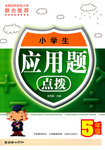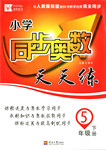题目内容
III. 阅读(共两节,满分40分)
第一节:阅读理解(共15小题;每小题2分,满分30分)
阅读下列短文,从每题所给的A、B、C和D项中,选出最佳选项,并在答题卡上将该项涂黑。
Alzheimer's disease affects millions of people around the world. American researchers say the disease will affect more than one hundred million people worldwide by the year twenty fifty. That would be four times the current number. Researchers and doctors have been studying Alzheimer's patients for a century. Yet the cause and cure for the mental sickness are still unknown. However, some researchers have made important steps towards understanding it.
Several early signs of the disease involve memory and thought processes. At first, patients have trouble remembering little things. Later, they have trouble remembering more important things, such as the names of their children.
There are also some physical tests that might show who is at risk of developing Alzheimer's disease. The tests look for proteins in brain and spinal cord fluid. The proteins appear to be found only in people with the disease. The protein tests correctly identify the presence of the disease in about ninety percent of patients.
Now, a much simpler physical test to predict Alzheimer's risk has been developed. Researchers found that trouble with the sense of smell can be one of the first signs of Alzheimer's. Using this information, they developed a test in which people were asked to identify twelve familiar smells. These smells included cinnamon, black pepper, chocolate, paint thinner, and smoke.
The study continued for five years. During this period, the same people were asked to take several tests measuring their memory and thought abilities. Fifty percent of those who could not identify at least four of the smells in the first test had trouble with their memory and thinking in the next five years.
Another study has shown a possible way to reduce a person's chances of developing Alzheimer's disease in old age. Researchers in Chicago found that people who use their brains more often are less likely to develop Alzheimer's disease. Those who read a newspaper, or play chess or word games are about three times less likely to develop the condition.
Researchers say they still do not know what causes Alzheimer's disease. But they say these findings might help prevent the disease in the future.
41. What’s the main idea of the passage?
A. Some early signs of the Alzheimer's disease.
B. Some physical tests about Alzheimer's disease.
C. The research about Alzheimer's disease.
D. The patients of Alzheimer's disease.
42. What’s the current number of Alzheimer’s patients?
A. 100 million B. 25 million C. 400 million D. 2050 million
43. What is not the early signs of the Alzheimer's disease according to the passage?
A. Poor memory B. Proteins exist in the brain.
C. Trouble with the sense of smell. D. Less use of the brain.
44. What does the underlined word “it” in paragraph 1 refer to?
A. Alzheimer's disease. B. Alzheimer's patients.
C. The cause and cure. D. The research.
45. According to the passage, we can learn that _______.
A. there are no proteins in the brains of the people with no Alzheimer's disease
B. the people who often use their brains will not get Alzheimer's disease
C. researchers and doctors have found ways to cure Alzheimer's disease
D. the people who have the trouble with the sense of smell will certainly suffer from Alzheimer's disease
【小题1】C
【小题2】B
【小题3】D
【小题4】A
【小题5】A
解析

 精英口算卡系列答案
精英口算卡系列答案 应用题点拨系列答案
应用题点拨系列答案 状元及第系列答案
状元及第系列答案 同步奥数系列答案
同步奥数系列答案 n academics.Much like sports,art in any form can and does make a difference in
n academics.Much like sports,art in any form can and does make a difference in young people’s lives.
young people’s lives.